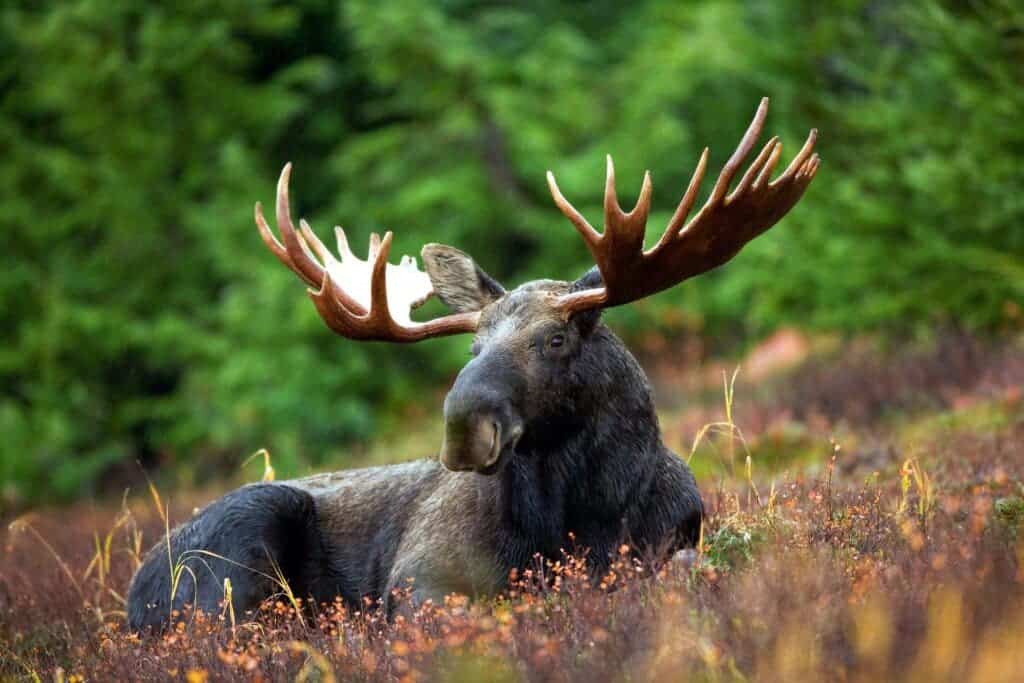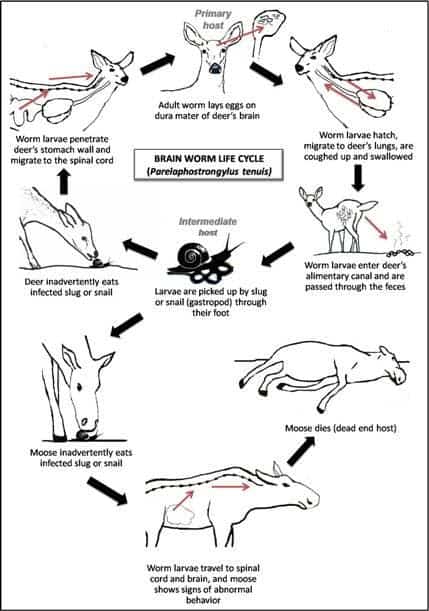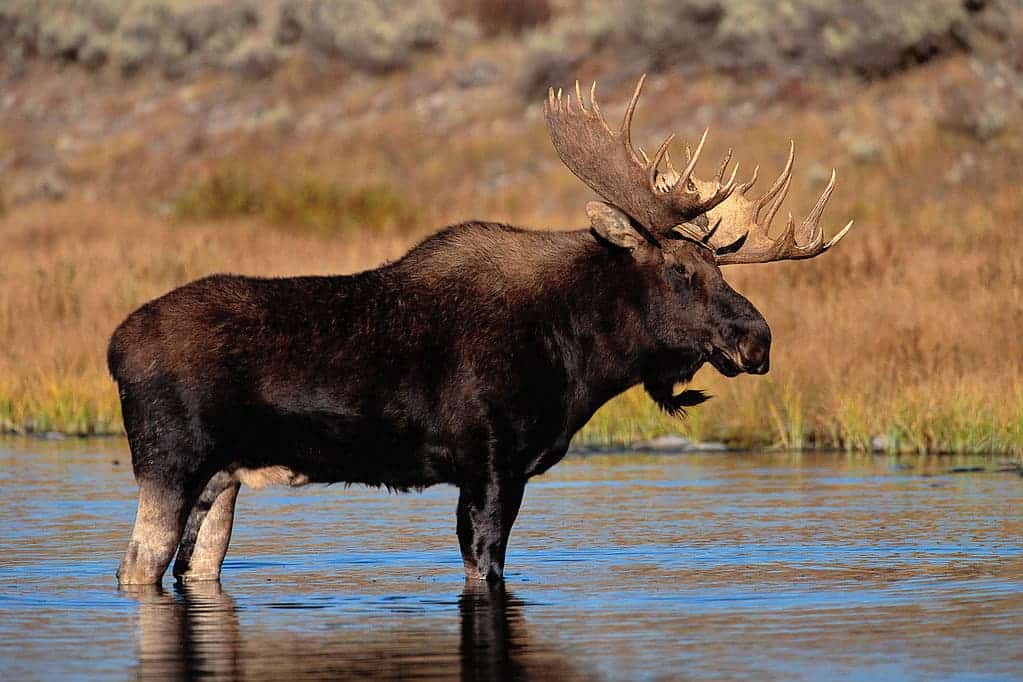Minnesota is home to the Ojibwe or Anishnaabe tribe. As the story goes, according to the Ojibwe legend, the moose can live without humans but the Ojibwe people can’t live without the moose. The Minnesota moose is an important cultural symbol for the tribe that completes their identity — and a symbol of how much our history intertwines with animals.

The Ojibwe and the moose
For centuries, the lives of Ojibwe have been connected with this large mammal. They view it as more than just a food source; the moose is a bridge that connects them to the souls of their departed ancestors.
The people of Ojibwe have long carved game pieces from antlers, created clothing from the hides and made use of the hair to embroider intricate designs on everything from stockings to cradleboards. With this, they have established an intimate connection with the moose which has been passed on to tribal generations. What seems to be a harmonious bond between humans and animals is now in danger as moose populations face imminent decline.

The Minnesota moose (Alces americanus) is the largest animal of the deer family. It can grow as tall as 6 feet (1.8 meters) from hoof to shoulder and can weigh as much as 1,000 pounds (450 kilograms). It inhabits the northern regions of the United States, including Maine to Washington, throughout Canada, and into Alaska. Moose are limited to cold climates as they are well equipped for the coldest temperatures because of their brown hollow hairs that trap air inside for insulation. Though gigantic, moose do not feed on meat and are herbivores feeding mainly on native willow, aspen, and balsam fir trees. It was this diet that earned them the name ‘moose’ which is an Algonquin term meaning ‘eater of twigs’.
Previously, the moose’s range covered a third of Minnesota’s area; however, for the last 50 years, it has been confined to only the northeast corner. Additionally, in a quick span of ten years, its population experienced a sharp drop from 9,000 to only as few as 3,500 individuals in the wild. Scientists once suspected that hunting was the underlying cause of this dramatic decline but with in-depth research, they found the main culprit: climate change.
Overheating and disease
It’s tough to be a moose. After centuries of being hunted by humans, you now have more trouble coming from humans.
Due to warming temperatures, this North American icon is suffering. Its thick, coarse fur with hollow hairs is excellently suited for protecting against the cold, but it can do little to help the moose in rising temperatures. This leads to weight loss, a fall in pregnancy rates, and increased vulnerability to disease.
The damage the moose suffer will only get worse in time. The warmer environment forces the moose to spend more time and effort seeking shelter rather than foraging for food, which reduces their chance of reproduction. Biologists have reported that the have a very tough time adapting to climatic variability and are declining dramatically as a result.
To make matters even worse, the unprecedented change in temperature also brought diseases to the moose population. For instance, studies have shown that they have been more susceptible to brain worm infection.
This brain worm has a bizarre life cycle.
Brain worms initially live in the brains of white-tailed deer but have no significant effect on them. The parasite’s eggs hatch in the deer’s feces which are later on eaten by slugs. Slugs then climb up plants and when the moose feeds on twigs they bite into the slugs that carry the parasite. This is how the brain worm ends up in the moose’s brain, where it can cause severe neurological damage affecting the moose’s behavior.

So where does climate change come into play? Generally, deer and moose do not share similar habitats. However, weaker winters in the North have lured the deer into the moose’s habitat, enabling them to spread the brain worm parasite.
The increase in average temperature has also resulted in milder winters, creating favorable conditions for ticks, parasites, and other species that affect the moose.
Ticks, in their normal life cycle, may spend the entire winter season attached to a moose. Subsequently, in early spring, they fall onto the ground to lay their eggs. The deep spring snow plays a vital role in regulating tick populations to prevent an overwhelming increase in numbers as not all ticks can survive in the cold. Unfortunately, with the heating climate, snow melts quickly, thereby creating a perfect environment for more ticks to thrive. It is not unusual to find moose with literally thousands of ticks on them! Moose tend to lose hair when highly infested making them more vulnerable to blood loss, and many die of anemia.
From spiritual icon to collateral damage

The Ojibwe people refer to the moose as “mooz,” or “twig eater.” But to them, it wasn’t just a walking piece of twig-eating meat. As was often the case with indigenous populations, they respected the animal and cherished its sacrifice, featuring it heavily in their mythology.
According to Ojibwe oral history and from recordings in birch bark scrolls, moose are symbols of endurance and survival. According to myth, there were once seven great miigis (Cowrie shells) that appeared in the spiritual world to teach humans, and one of them was the moose miigi. Several other tribes of indigenous peoples of North America also feature moose in prominent myths.
As the peoples of the Ojibwe and other First Nations groups struggle to maintain the connection to their system of beliefs, the moose itself is suffering a substantial population decline due to human activity.
Climate change is a large-scale phenomenon, but the damage it does is very local and specific. Rising temperatures create a chain reaction of effects that are detrimental to all wildlife, and the iconic Minnesota moose is no exception. To ensure the survival of this species, strengthened policies and conservation practices must be in place. This is our last hope to reverse the effects of climate change and enable more generations of Ojibwe to continue their culture.


